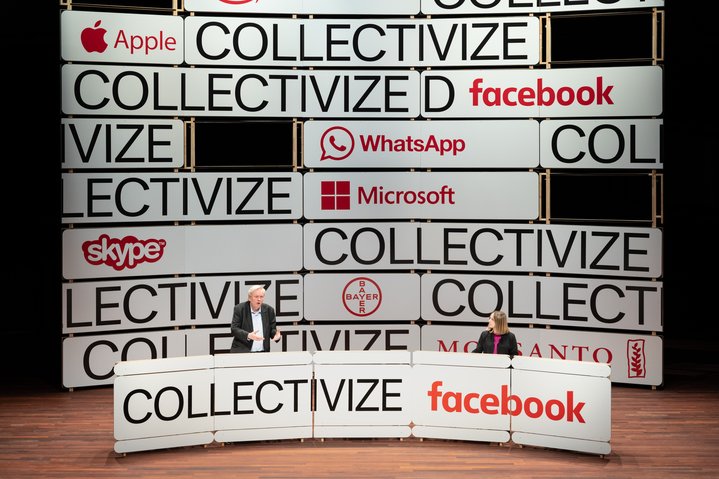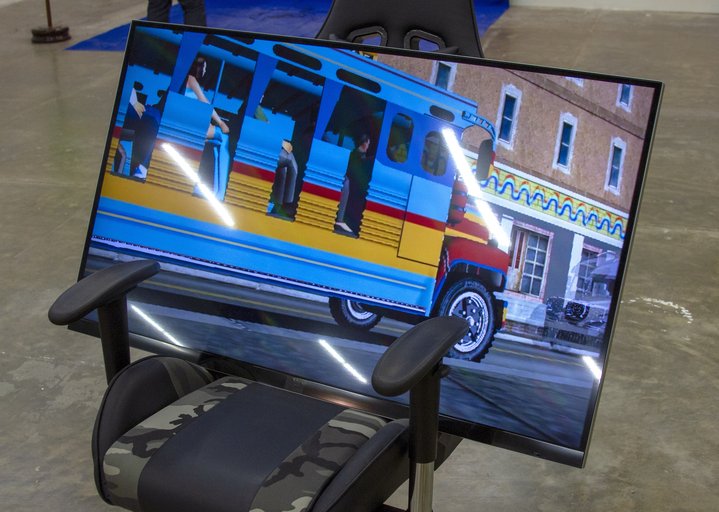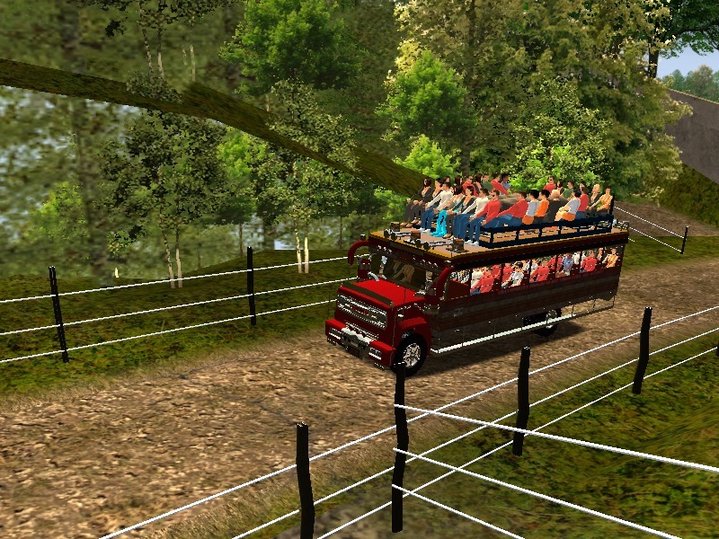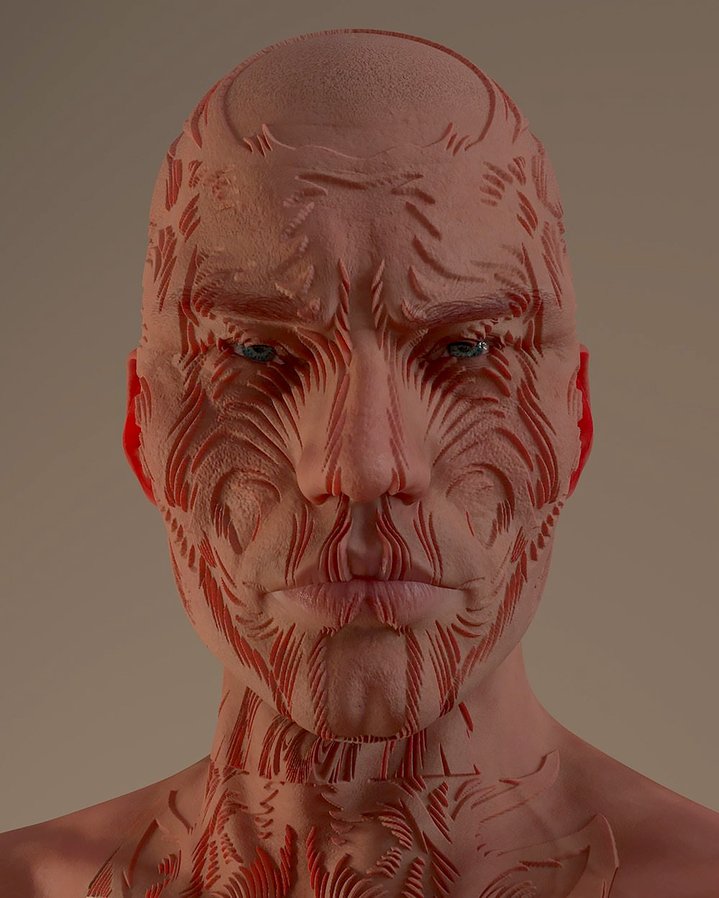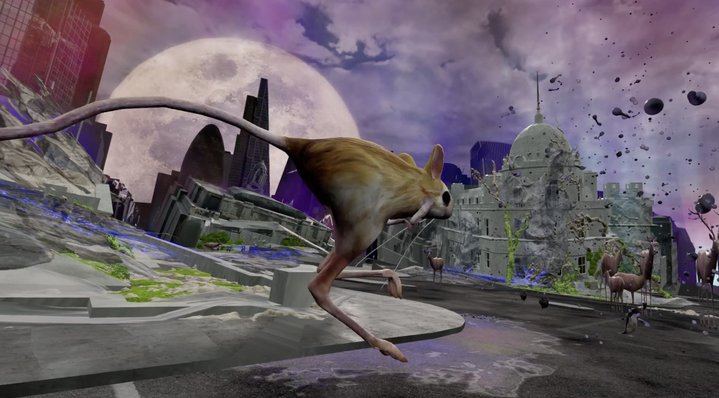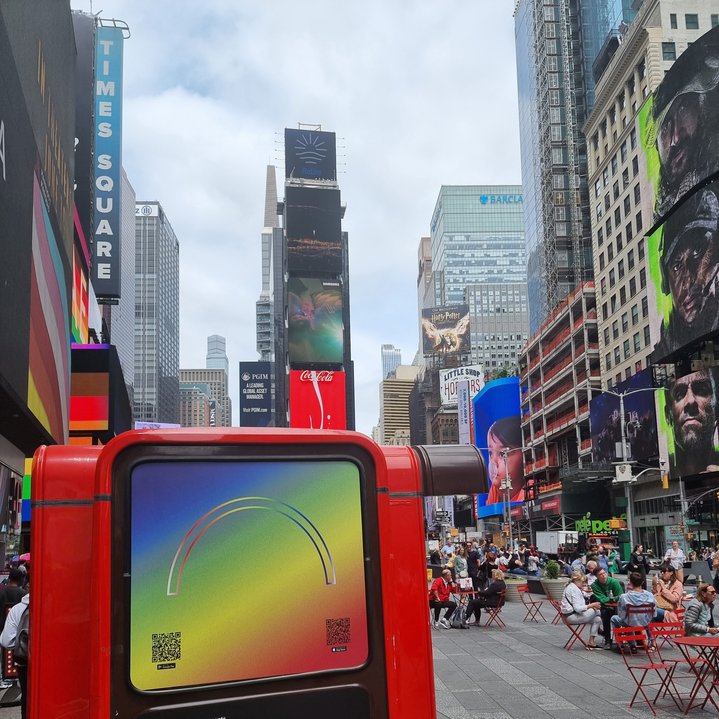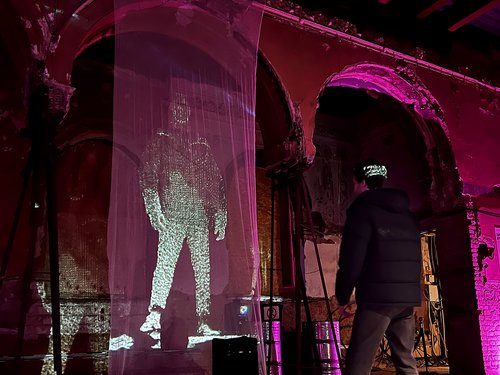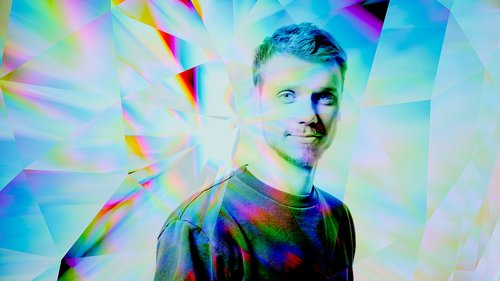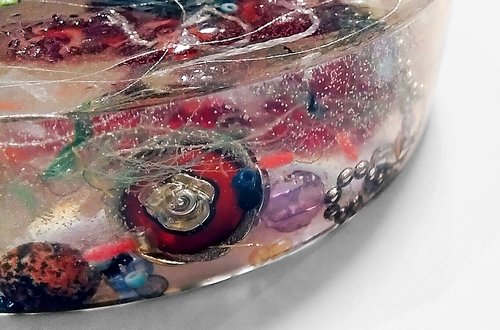Ksenia Yurkova. The Time of Fun. Postponing the inevitable, 2022. Courtesy of Tallinn Art Hall press office
Estonia’s New Tech Art Immersion
An exhibition showcasing new media art is on view at a newly opened venue in Tallinn’s hinterland encouraging people to reflect on the most poignant issues of today’s conflicted reality through a digital lens.
On the outskirts of Tallin, where wet snow cheers up the grey landscape of faceless late-soviet housing blocks, motorways and parking lots, a bright pink construction has suddenly landed, like a spaceship. This alien intrusion is the newly-opened Lasnamäe Pavilion of the Tallinn Art Hall, harbouring everything new and cutting-edge the art world has to offer Tallinn: technologically advanced art practices and virtual realities of all kinds, or so, at least, the curators claim.
Called Immerse! and open until the end of April, the show comprises nineteen works by a roster of international artists from Eastern Europe and beyond. It is the final chapter in an ambitious research project, Beyond Matter, which explores the role of new media in art, spanning four years and linking three institutions: Tallinn Art Hall in Estonia (playing host to the current exhibition), ZKM Karlsruhe in Germany and Tirana Art Lab in Albania. Most of the artworks were created as part of residencies. The diverse range of works on show approach computation and technology from different conceptual angles and achieve different ends. Whereas accessing each piece’s internal logic and message takes effort from the viewer, what lies on the surface is the proliferation of technological elements: there are two separate VR pieces with headsets hanging from the ceiling, specially created apps, websites, countless screens and projections of all sizes at every corner, audio tracks, and a heavy peppering of QR codes on top. Each vying for the viewer’s attention or — immersion.
Curators, Corina L. Apostol (of the Tallinn Art House) and Lívia Nolasco-Rózsás (of ZKM Karlsruhe) draw attention to the pertinence of digital media in our lives as repercussions of recent global events – the pandemic and catastrophic geopolitical conflicts. Both themes are reflected in the two VR pieces. Ami Clarke (b. 1969) creates a derelict cityscape of London’s financial district, highlighting the links between economic power structures and the rise of data tracking spurred by Covid. The second piece by Ukrainian Anna Manankina (b. 1995), transports the viewer into a Kharkiv bomb shelter; then its destroyed city centre; then a fresh graveyard – all recently collected data from her devastated hometown. It’s a harrowing experience. It raises questions about the role digital media and virtual reality play in contemporary warfare and how our brain processes them.
Nearby, a Russian-born artist now based in Austria, Ksenia Yurkova (b.1984), raises similar questions but from the other side of the barricades, so to speak. A multi-channel immersive video installation ‘HOLD OFF: The Time of Fun’ invites the viewer take part in and control the media generated by the Beslan school siege terrorist attack which took place in Russia in 2004. There are two alternate realities: real footage from Beslan, and excerpts of terrorist activities from various popular media and film. A button is provided whereby the viewer can flip from one to the other like the detonation button used by the attackers. Her work speaks of a now largely forgotten precedent to the propaganda machine which now exists in Russia, the flippancy of popular media, and the dangers of trusting what we see on our screens.
A very different treatment of media is given by Croatian artist Tomo Savić-Gecan (b. 1967). He is best known for extremely minimalist conceptual works – philosophy bordering on pranks; for example, an artwork for a show in Texas in 2006 (all of his pieces are Untitled) consisted of his coercing a Dutch art magazine to print their entire run 1mm smaller than usual. His current work is a re-staging of a piece from the latest Venice Biennale, whereby a random algorithm selects a leading story from one of the world’s news sources and transforms it into movement instructions for five performers, resulting in what looks like a piece of minimalist contemporary dance taking place without warning (and could potentially go unnoticed, which is the intention), these performances will take place every day throughout the duration of the show.
Another ephemeral piece by Latvian artist Kristaps Ancāns (b.1990) Polar Rainbow is an app, accessible via QR code, which generates a rainbow in any location the viewer chooses to photograph, and at their will, post on social media. Obviously, a gesture of LGBTQI+ support, this immaterial pride monument is, as the curators explain, an alternative offering for some countries like Poland, where physical manifestations of pride rainbows are met with aggression and vandalism.
The role of new technology in contemporary art on show here oscillates between being a medium or tool, and a subject matter – often both, the heavy focus on the former, its noticeable physicality, gives an overall modernist, even formalist ring to the approach. The use of these technologies in art is relatively new for Eastern European artists themselves, admit the curators, perhaps explaining a leaning towards exploring the expressive potentials of these technologies, overriding any conceptual framework. Most works need to be understood independently from the rest.
Whilst Tallinn Art Hall’s main building is being renovated, this location was selected for the temporary pavilion, with a Russian-speaking minority with little contemporary culture exposure and whose demographic is not the average museum-goer. This forms part of an applaudable effort to integrate and engage an otherwise ostracised part of the Estonian population, a segregation which is becoming increasingly problematic with recent events (in Estonia and all the Baltic countries). To what extent some of the nuanced poetics and radical approaches will be appreciated by the Lasnamäe local residents remains to be seen.






